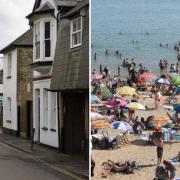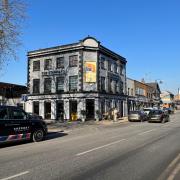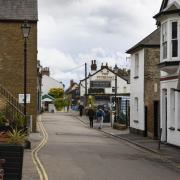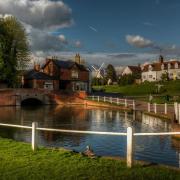Southend is a jewel of the Essex coast. Sara Wrightman asks what the future holds for this resort and in particular its star attraction - the world's longest pleasure pier
SOUTHEND has always been the number one destination for London day-trippers. Lying at the mouth of the Thames estuary, where the river meets the North Sea, Southend has been the capital's source of a breath of sea air for centuries and for nearly 180 years its famous pier has been the town's top attraction.Having survived four fires and been used by the British Navy during World War II, Southend Pier is a sturdy structure of iron and wood that has been synonymous with the jovial seaside resort and put Southend on the map as the home of the world's longest pleasure pier.'People come and sit in the caf� with their grandchildren and reminisce about the days they spent here as children, themselves,' says Tracy Frost, manager of the Pier Caf�, which she opened just over a year ago proving that Southend Pier has a past, present and a future.
Beside the seasideOriginally, built in 1830, the wooden pier deteriorated and was bought for the sum of �10,000 by the local council who renovated it to its present-state in 1889. Jutting seaward, the magnificent pier was resurrected as a drop-off point for ships bringing tourists from the big smoke for a day at the seaside. As the tide rose day-trippers could hop onto the pier and catch the train or tram back to dry land - where they would paddle and walk along the prom. At more than a mile long, Southend Pier ensured that the city folk were spared muddy shoes walking back inland across the shore. Southend Pier's first tram-rides were soon followed by the arrival of two diesel trains. Now, the trains run every 30 minutes carrying up to 265 passengers into the waves and back towards dry land - a far cry from the original horse-drawn trams.
Illustrious historyBut times gone by are remembered at Southend Pier Museum, tucked underneath the pier, which continues to tell the stories of the last 180 years including how this splendid structure served as a landing point for 84,000 ships during World War II. 'The pier had everything - people would literally come and spend a day here and be entertained,' explains Peggy Dowie, chair of Southend Museum Trust.During its illustrious history the pier has survived no less than four fires and is currently awaiting full restoration following the last blaze just three years ago. 'People would really like to see the pier restored to its former glory - with old-fashioned fair stalls and rides giving it back its history,' explains Tracy. 'I have never worked out in the middle of the sea - at first it was quite strange, but now it is so peaceful and I hear all the stories of people who have been coming here for years.'The first flames roared across the pier's entrance back in 1959 destroying the pavilion. The pavilion was replaced by a ten-pin bowling alley which itself went up in smoke in the mid 1990s. In the late 1970s, fire wreaked havoc on the pier's head taking several years to repair, and then one dark night in the mid 1980s, a boat sliced straight through the old and new pier heads causing further damage. The fourth fire occurred in 2005 when Marriott's Fish Restaurant, cafes and stalls were all reduced to ashes.
Restored to gloryDespite suffering its fair share of tragedy, Southend Pier has always managed to survive, but, this time staff and visitors really want the resurrection to be something special. Following the most recent fire, postcards with a small questionnaire were handed out to tourists and locals to find out their ideas for the future of the pier. 'People love coming out into the sea - but when they get here they want something to do for everyone,' says Tracy, who has spent a year listening to the views of pier visitors.'We simply need to look to its past to decide on its future,' says Peggy. 'This pier belongs to the world.'


























